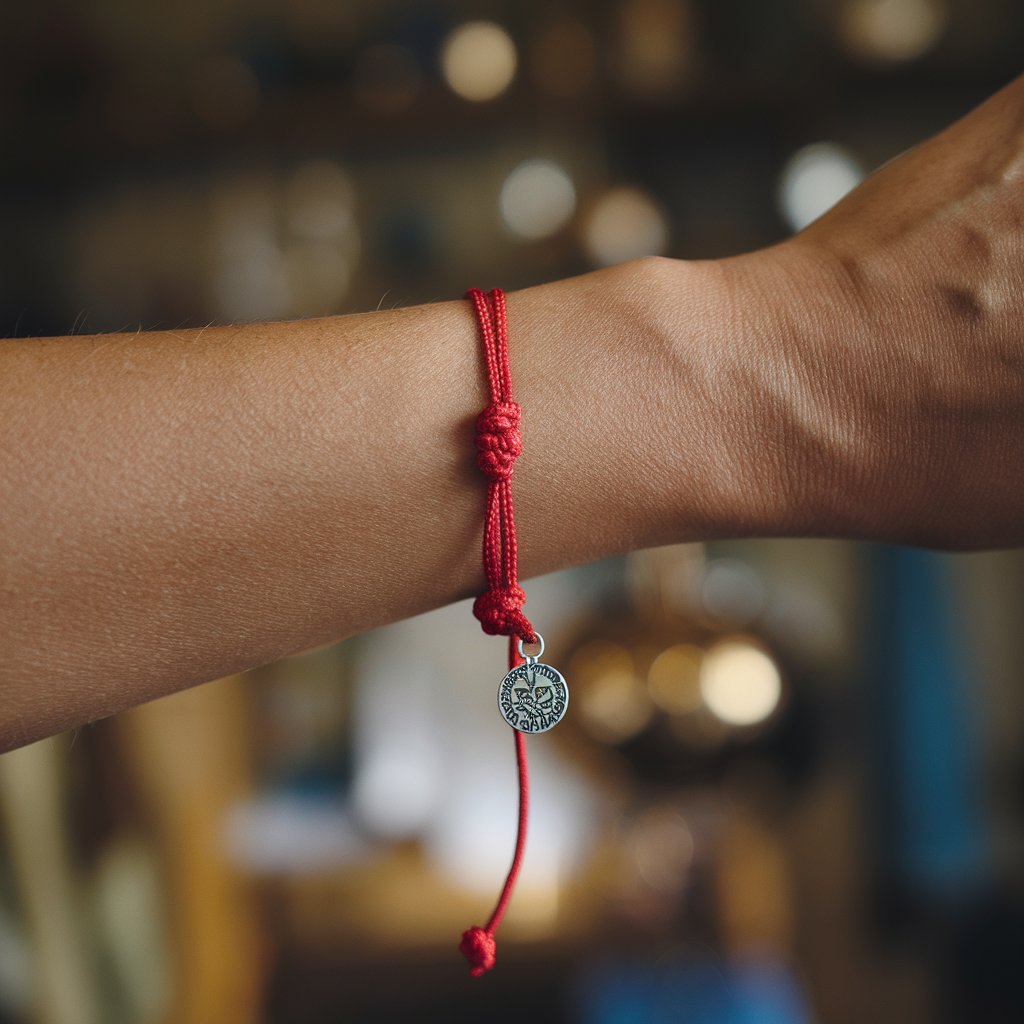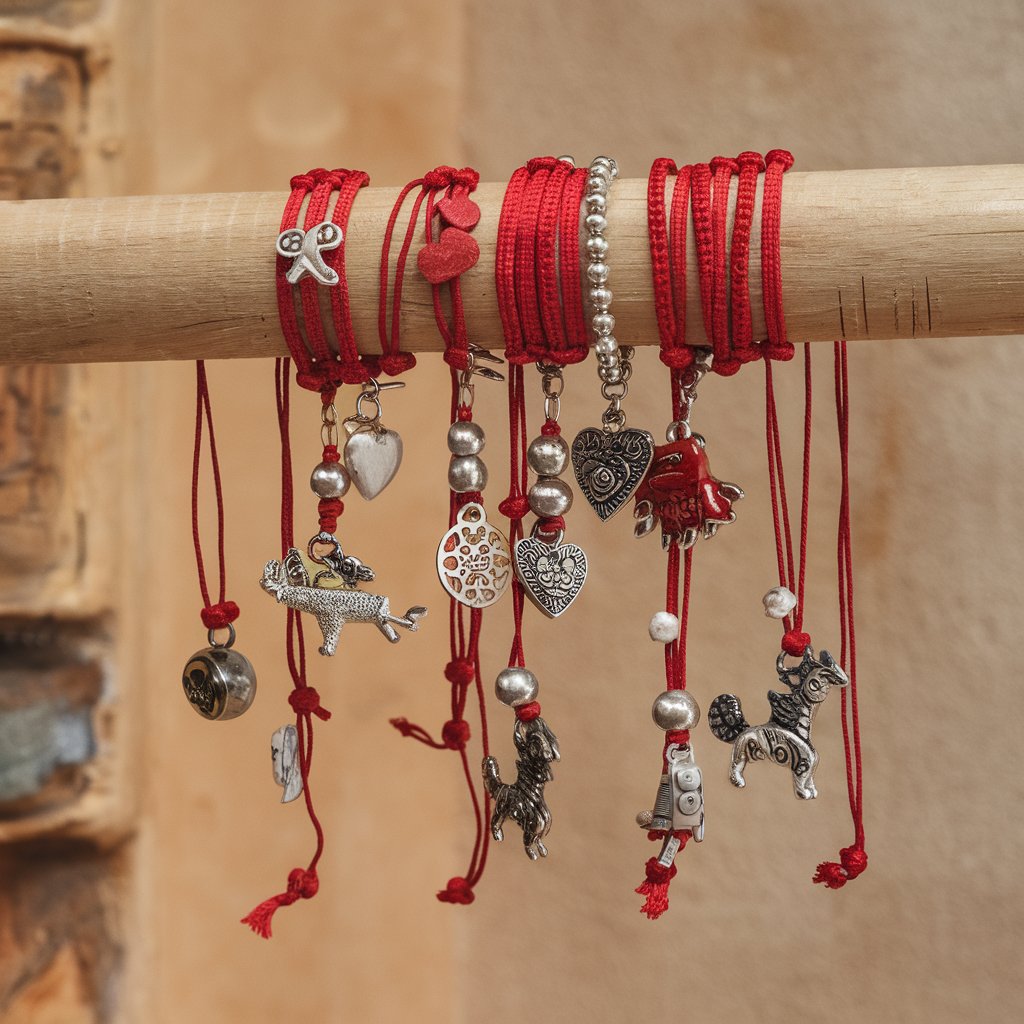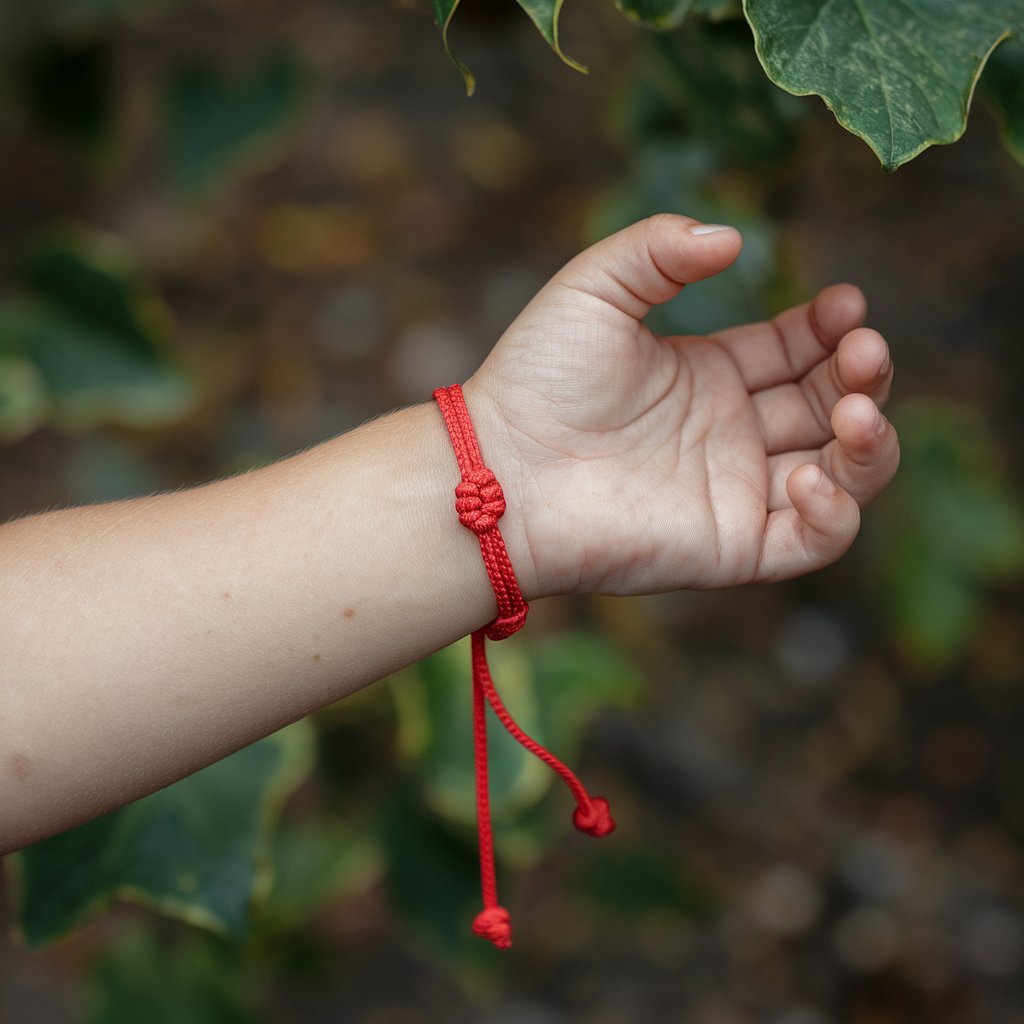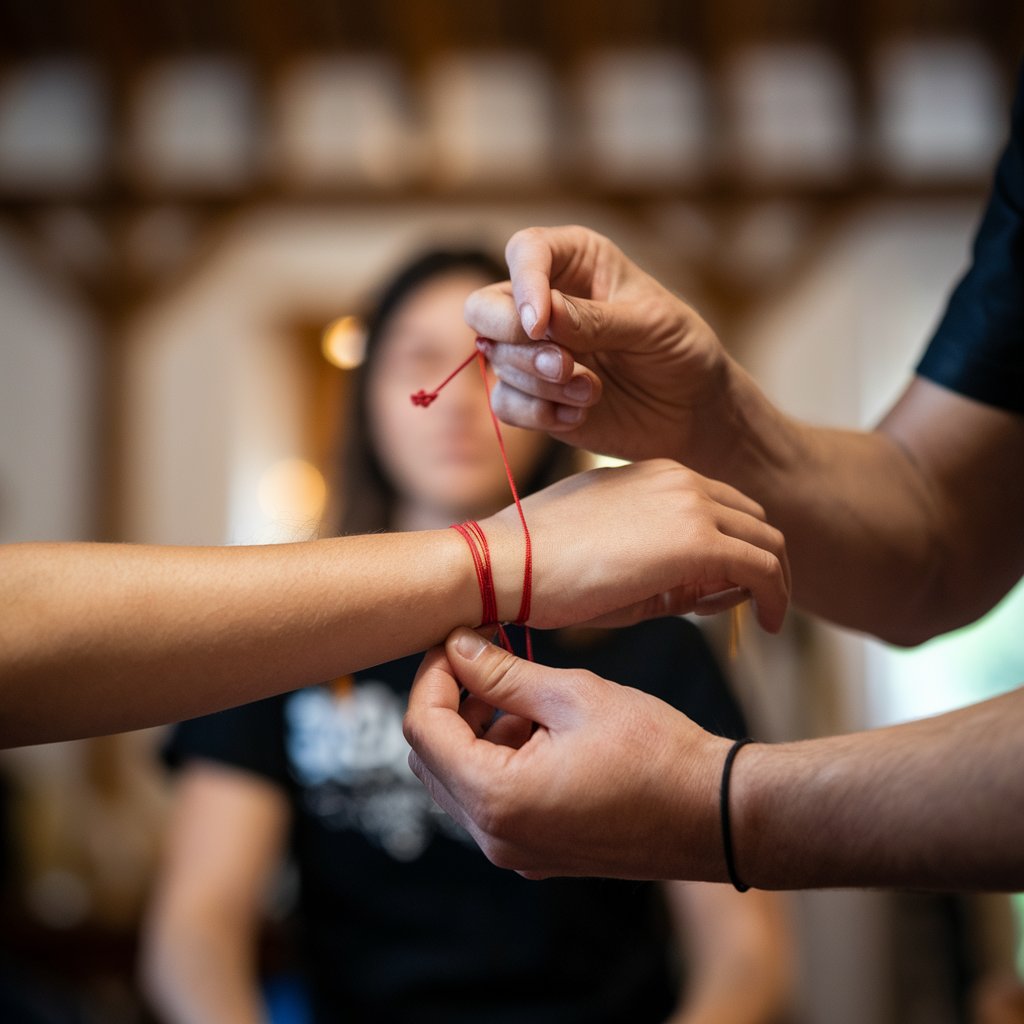Red String Bracelets: Their Significance in Different Cultures and Traditions

The Cultural Significance of Red String Bracelets
Red string bracelets are more than just a fashion accessory. Today, they might be seen adorning wrists in trendy outfits, but their roots run deep into various cultural and spiritual traditions.
Key Takeaway
- Protection: In many cultures, red string bracelets are believed to guard against negative energies and evil eyes. This belief aligns with the use of certain crystals to protect your energy, such as Black Tourmaline and Obsidian, which are known for their protective properties.
- Connection: They symbolize unity and the bonds between people, often associated with love and relationships.
- Good Fortune: Worn as talismans, these bracelets are thought to bring luck and prosperity.
The significance of the red string bracelet extends beyond aesthetics, enriching lives with layers of meaning that connect us to our heritage and beliefs. However, it’s worth noting that these bracelets can also serve as a reminder to seek inner peace during stressful times.
Do you have a specific interest in meaning of red string bracelet? Then use the table of contents below to jump to the most relevant section. And you can always go back by clicking on the black arrow in the right bottom corner of the page. Also, please note that some of the links in this article may be affiliate links. For more details, check the Disclosure section at the bottom of the page.
Here's what we'll cover:
- The Cultural Significance of Red String Bracelets
- The Jewish Tradition: Origins and Beliefs Surrounding the Red String Bracelet
- The Hindu Connection: Fertility, Protection, and Good Fortune
- The Buddhist Practice: A Blessing from a Teacher
- Cross-Cultural Interpretations: Love, Unity, and Protection
- Modern Perspectives on Red String Bracelets: Fashion or Faith?
- Wearing a Red String Bracelet for Protection: Guidelines and Cultural Tips
- Embracing Diversity Through Red String Bracelets
The Jewish Tradition: Origins and Beliefs Surrounding the Red String Bracelet
The Jewish tradition red string bracelet has a long history, with its roots found in ancient practices. Historical texts like the Tosefta indicate that the red string has been linked to spiritual protection and blessings for a long time.
Beliefs in Kabbalah
Kabbalah, a mystical branch of Judaism, holds significant beliefs about this simple yet powerful accessory. According to Kabbalistic teachings, the red string serves as a protective talisman against the evil eye—a malevolent glare believed to cause harm or misfortune. This belief is not just a whimsical notion but an integral part of Kabbalistic tradition.
Left Wrist Significance
The red string is traditionally tied around the left wrist. In Kabbalah, the left side of the body is considered the receiving side, making it more vulnerable to negative energies. By wearing the red string on the left wrist, individuals invite positive energies and protection.
Ritual Practices
Often, the red string used in this practice comes from a longer thread wound around Rachel’s Tomb in Bethlehem. It is said that this imbues the string with additional protective qualities.
Symbolic Meanings
Beyond protection, the red string symbolizes connection to the divine and continuous spiritual safeguarding. It’s a silent reminder of one’s faith and heritage.
The rich tapestry of meanings behind the Jewish tradition red string bracelet offers profound insights into how a simple thread can embody centuries of tradition, spirituality, and communal identity.

The Hindu Connection: Fertility, Protection, and Good Fortune
In Hinduism, the red thread bracelet, also known as kalava or mauli, holds an esteemed place in various religious ceremonies. This sacred thread, often tied around the wrists of newborns during rituals to invoke divine protection and blessings, is more than just a ceremonial item. It represents a shield against negative energies and misfortune. The mauli red thread, tied with specific intentions during these rituals, carries deep symbolic meaning.
Symbolism of the Red Thread
The symbolism of the red thread extends beyond mere protection. It is closely associated with fertility and auspiciousness. For instance, during weddings, the bride and groom might wear red threads to signify the sanctity of their union and to seek blessings for a prosperous future together. In many parts of India, expectant mothers don red threads to ensure a safe pregnancy and delivery.
 These threads are typically blessed by a priest during puja (prayer rituals), imbuing them with spiritual significance. Hinduism red thread bracelet practices highlight the culture’s intricate belief system where colors and symbols are interwoven with everyday life. The vibrant red color symbolizes power, love, and courage—a potent reminder of the divine presence in life’s journey.
These threads are typically blessed by a priest during puja (prayer rituals), imbuing them with spiritual significance. Hinduism red thread bracelet practices highlight the culture’s intricate belief system where colors and symbols are interwoven with everyday life. The vibrant red color symbolizes power, love, and courage—a potent reminder of the divine presence in life’s journey.
Seeking Protection from Negative Energies
In addition to the spiritual significance of the red thread, many individuals also seek physical protection from negative energies in their environment. This has led to an increased interest in EMF protection crystals, which are believed to help mitigate health risks from electromagnetic exposure. Wearing this simple yet profound accessory connects individuals to their heritage while serving as a constant reminder of the divine forces at play.
Furthermore, the act of tying the mauli thread itself is steeped in ritualistic significance. The importance of tying mauli thread reflects a deep-seated belief in its power to bring about positive change in one’s life.
The Buddhist Practice: A Blessing from a Teacher
In Buddhism, the red string bracelet holds deep spiritual significance. It is often given as a gift after completing a spiritual retreat, serving as a powerful reminder of one’s journey towards enlightenment.
Symbolism and Rituals
1. Completion of Spiritual Retreats
Upon finishing a rigorous retreat, practitioners might receive a red string bracelet from their teacher. This gesture symbolizes the blessings and protection imparted by the teacher. These retreats are not just physical journeys but also flexible retreats that help in retreating from our own delusions, leading to profound personal transformation.

2. Connection to Teachings
Wearing the red string reminds the individual of their connection to Buddhist teachings and their commitment to mindfulness and compassion.
Personal Anecdote
A friend once shared her experience after attending a meditation retreat in Thailand. She described how the monk gently tied a red string around her wrist, whispering blessings for peace and wisdom. This bracelet became a cherished reminder of her transformative journey.
Practical Significance
1. Protection and Blessing
In Buddhism, such bracelets are believed to offer protection against negative energies while fostering spiritual growth.
2. Daily Mindfulness
Each time one glances at their wrist, it acts as a gentle nudge towards practicing mindfulness in daily life.
The red string bracelet in Buddhism is more than an accessory; it’s a sacred symbol of one’s path to inner peace and enlightenment.
Cross-Cultural Interpretations: Love, Unity, and Protection
Chinese Traditions
In Chinese culture, the red string holds profound significance, often symbolizing connection and love. The concept of the “Red Thread of Fate” suggests that invisible red threads connect those who are destined to meet, regardless of time, place, or circumstances. This belief is rooted in the idea that these connections are preordained by the gods, fostering a sense of unity and eternal bond among individuals.

Japanese Customs
Similarly, in Japanese culture, the red string carries deep meanings within relationships. The “Red String of Destiny” (赤い糸) is a popular folklore where it is believed that an invisible red string ties together those who are meant to be lovers or close friends. This string may stretch or tangle but never breaks, symbolizing an unbreakable connection that transcends physical boundaries.
Both cultures emphasize the strength of personal bonds through these red strings. These customs highlight how such simple objects can embody profound spiritual and emotional meanings across different traditions.
The significance of red string bracelets in these cultures showcases their role as powerful symbols of love, unity, and protection. They remind us of our interconnectedness and the divine fate that brings people into our lives.
Modern Perspectives on Red String Bracelets: Fashion or Faith?
In today’s world, the modern use of red string bracelets has evolved beyond their traditional roots. They have become a popular fashion accessory, often seen adorning the wrists of celebrities and influencers. This trend has sparked curiosity among many who may not be familiar with the deeper red bracelet significance.
A key aspect of this modern adaptation is how it intertwines with individual belief systems. While some wearers are drawn to the aesthetic appeal of the bracelet, others are mindful of its profound cultural and spiritual meanings. The red string can signify protection, good fortune, and a connection to ancient traditions, resonating with personal beliefs about luck.
Here are some ways people blend tradition with contemporary styles:
- Fashion Statement: For many, the red string bracelet is a stylish accessory that complements various outfits. Its simplicity allows for versatile pairing with other jewelry.
- Personal Belief: Individuals might wear the bracelet as a talisman, reflecting their faith in its protective qualities or as a symbol of their cultural heritage.
- Cultural Awareness: Wearing the bracelet can be an expression of respect and acknowledgment of its origins and significance in different cultures.
Whether it’s worn for fashion or faith, the red string bracelet continues to hold a special place in modern society. Its enduring presence highlights the universal appeal of symbols that transcend time and geography.
Wearing a Red String Bracelet for Protection: Guidelines and Cultural Tips
Wearing a red string bracelet for protection involves more than simply placing it on your wrist. To maximize its spiritual benefits, follow these guidelines:
 How to Wear a Red Thread Bracelet for Protection
How to Wear a Red Thread Bracelet for Protection
- Choose the Correct Wrist: In many traditions, the left wrist is preferred as it is believed to be the receiving side of the body and soul. This allows the bracelet to absorb protective energies directly.
- Intentions Matter: Before tying the bracelet, set a clear intention or say a prayer. Focus on what you seek protection from or what kind of positive energy you wish to attract.
- Material Considerations: Opt for natural materials like wool or cotton, which are believed to hold purer energies compared to synthetic alternatives.
Tying It Properly According to Cultural Traditions
- Jewish Tradition:
- According to Kabbalistic practices, have someone who loves you tie the bracelet while reciting a blessing or prayer.
- Tie seven knots, symbolizing the seven spiritual dimensions.
- Hindu Practices:
- During religious ceremonies, priests often tie red strings with specific mantras and blessings.
- Ensure it’s tied snugly but comfortably, usually by an elder or respected family member.
- Buddhist Rituals:
- After completing a retreat, a teacher or monk may bless and tie the string around your wrist.
- This serves as a reminder of your spiritual journey and the wisdom gained.
Reflecting on these practices not only honors their origins but also deepens your connection with the bracelet’s protective qualities. The next time you wear one, you’ll carry with it centuries of tradition and intention woven into a simple yet powerful accessory.

Embracing Diversity Through Red String Bracelets
Understanding the cultural diversity through red thread bracelets helps us appreciate their universal meaning even more. Every culture has its own interpretation—be it protection, love, or spiritual connection. By respecting these different meanings, we can better understand and celebrate the significance of red string bracelet in various cultures.
When we wear these bracelets, we’re not just honoring old traditions; we’re also connecting with a larger human experience that goes beyond geographical and religious differences. This common symbol serves as a strong reminder of our interconnectedness and respect for one another.
Thanks for the blog graphics: Canva.com
Disclosure: At Buddhatooth.com we only mention the products that we’ve researched and considered worthy. But it’s important to note that we are a participant of several affiliate programs, including but not limited to VigLink and Amazon Services LLC Associates Program, an affiliate advertising program designed to provide a mean for us to earn fees by linking to Amazon.com and affiliated sites. As an Amazon Associate Buddhatooth.com earns from qualifying purchases.

